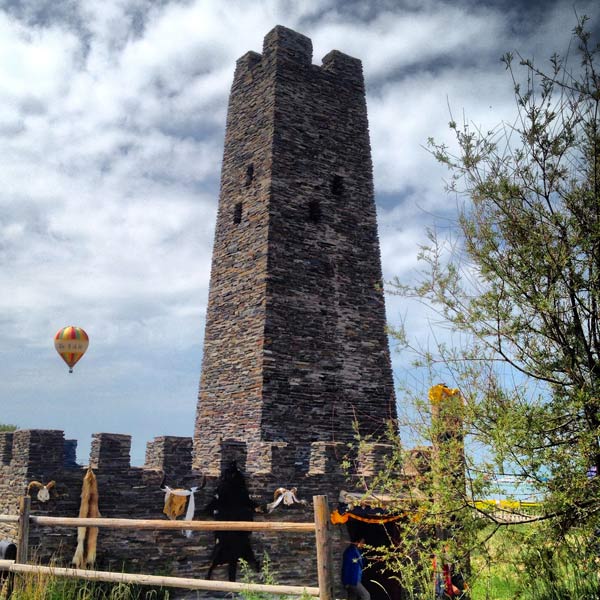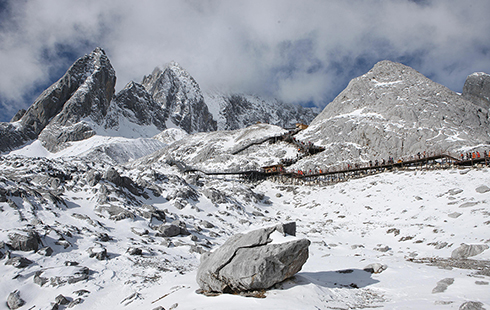The jade tree branches out
By Erik Nilsson ( China Daily ) Updated: 2015-07-18 08:11:39
 |
|
A hotair balloon rises over Qinghai Lake near the provincial capital, Xining, behind a Tibetan stone tower adorned with animal skulls and pelts in 2013. |
Cultural charisma
While less historically significant, more visually resplendent are the Gyani Mani Stone Walls - a Technicolor labyrinth of an estimated 2.5 billion painted rocks, etched with holy symbols, piled into ramparts.
It's said to be the world's largest mani structure.
It took about three years after the quake to reconfigure the stacks amassed over three centuries. Today, pilgrims, monks, alms-seekers and the occasional lost yak take sacred steps through the dizzying arrangements of polychrome stones.
Craftspeople chisel rocks behind the complex with cacophonous staccatos of "crack, thwack, smack!" that echo off the mountains. They unintentionally play percussion for the pilgrimages inside.
Embedded within the maze are rows of prayer wheels, stupas and religious buildings. Looming poles that radiate prayer flags serve as beacon towers to orient pilgrims, who often start in the center and spiral outward, clockwise.
While the mani walls can prove puzzling, Jyekundo Dondrubling Monastery helps visitors position themselves within Yushu, as the mountaintop temple provides a bird's-eye panorama of the prefecture seat.
Yet non-Buddhist travelers find Yushu's constellations of holy sites to be a sideshow to the circus that is the annual horse festival, which runs from July 25-28.
|
|
|
|
|
|
|
|

























 Raymond Zhou:
Raymond Zhou: Pauline D Loh:
Pauline D Loh: Hot Pot
Hot Pot Eco China
Eco China China Dream
China Dream China Face
China Face






